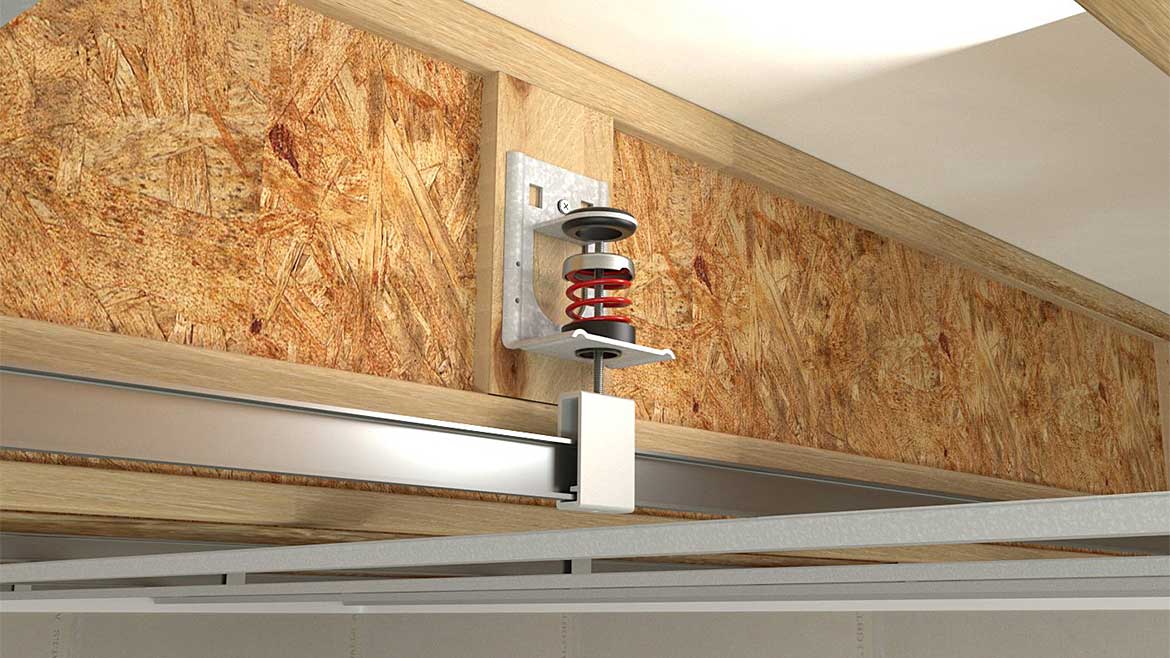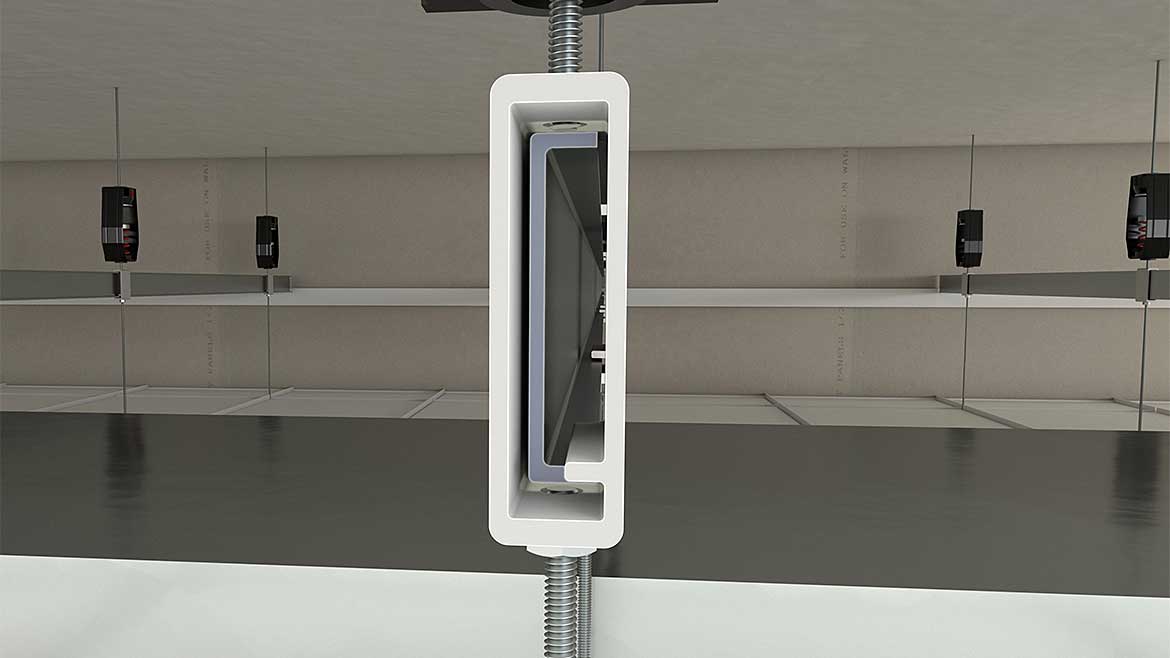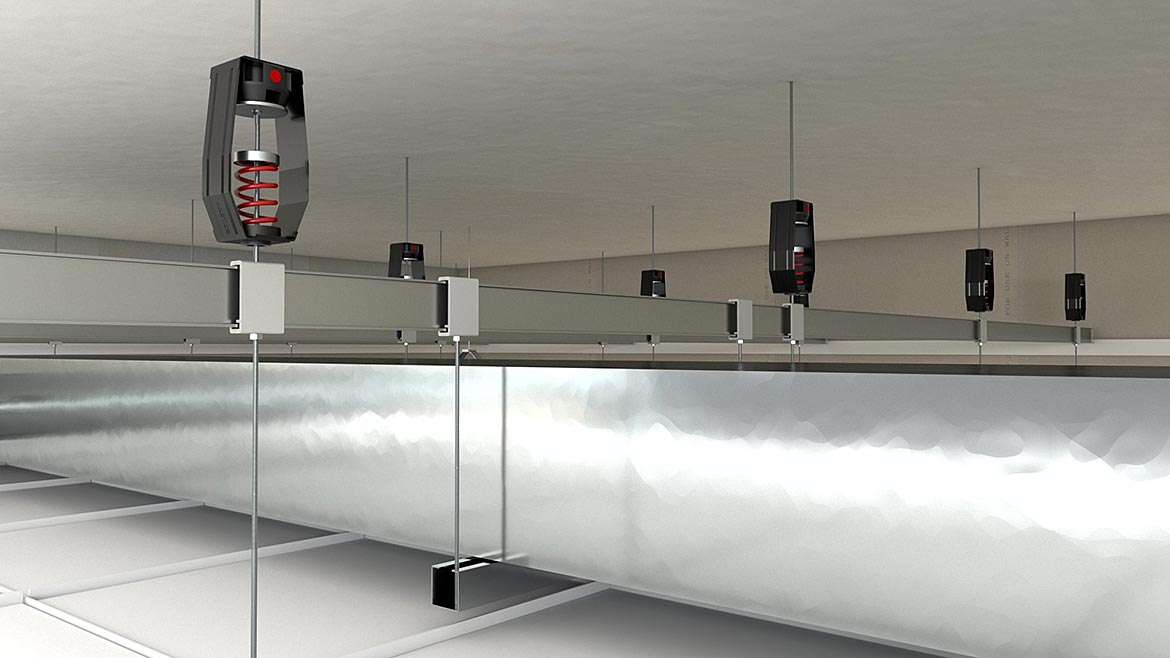It goes without saying: COVID changed the world. However, something to consider is how the collective experience shifted people’s preferences and tolerance levels. Take workers returning to shared places of business, for instance. Once isolated at home with no other or only a handful of “co-workers,” these same individuals, once again, returned to shared and sometimes, open, office spaces. Normal and once innocuous noises like commercial printers and microwaves now somehow seemed louder, cutting through consciousness and impeding projects and focus.
Enter the world of acoustics, where office retrofits and isolated spaces, such as ceilings, are here to save the day, helping to close off open spaces, and cut down on sound transmission to improve worker productivity and satisfaction.
Making the Connection
Nearly every ceiling isolation manufacturer utilizes an eccentric (offset) channel clip for holding the main framing of the ceiling. Despite its widespread availability, the existing standard channel clip design is inherently flawed: it only holds one size of rolled channel, and the eccentric design of the channel clip limits the amount of weight that the channel clip can support, regardless of the strength of the rest of the hanger assembly. Often, these clips only support one ceiling or system at a time.
This wouldn’t be as much of a problem in years’ past. But modern times call for modern solutions.



An Alternative, For Consideration
Standard C-channel clips are designed to be used with a single cold-rolled channel size, typically 1½ inch. While this measurement does allow for some clearance and strength, the diminutive size could present obstacles in some buildings today. Some manufacturers considered this issue, and recently developed a new and more versatile alternative to the standard C-channel clip in building constructability. What has been coined “Uniclip” is a concentric, or in-line, channel clip.
The innovative design of this clip allows the use of any size of CRC, from 1/2 up to 2½ inch in height. The lower restraint featured in the clip’s design prevents upward movement of CRC during installation, and what’s more is that no modification is required to change CRC sizes.
Consider this: the eccentric—or offset—design of C-channel clips limits spring hanger support to 210 pounds. Utilizing concentric, or inline, design, the clip supports hanger weights up to 370 pounds. Making use of the increased hanger weights, a separate threaded rod can be extended from the bottom of the clip to support a secondary ceiling, ductwork, or equipment. Additionally, the clip can also be used mid-span, without an isolation hanger, to support suspended equipment.
Spanning the Gaps to Close Them
Utilizing larger CRC sizes allows for greater spacing, or spanning, between CRC, per the Steel Framing Industry Association. These larger spans offer numerous benefits including improved isolation through fewer points of contact with structure, and fewer isolators required in congested ceiling applications (read: decreased labor burden and installation time due to the elimination of the need for special framing with spanning under wider ductwork).
As previously mentioned: COVID changed a lot in the world, and in the construction and acoustics industry, a marked improvement came about. Sometimes, it’s a small change that can bring about a notable improvement.






Report Abusive Comment